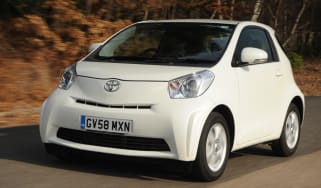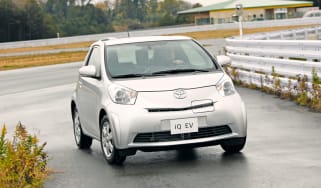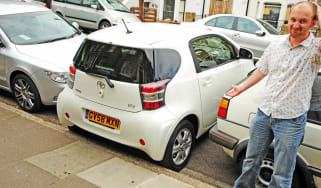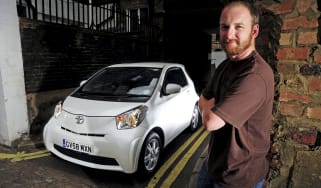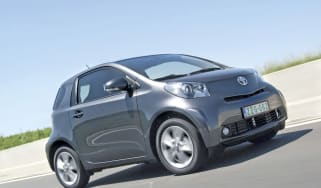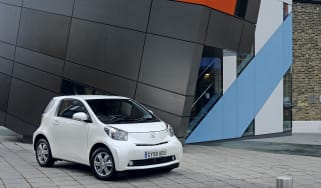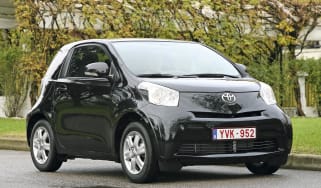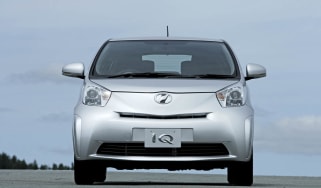Toyota iQ CVT review
Tiny city car is great, if a little cramped

Styling/image
For city drivers with their finger on the pulse, this is the car Toyota wants them to be seen in. Much more funky than a G-Whizz and more practical (in theory, at least) than a Smart ForTwo, it’s the new kid on the block. But is the Toyota badge cool enough?
Interior/practicality
Compared with the rather basic cabin of its Aygo sibling, the 2,985mm-long iQ is quality, which goes some way to explaining why it’s more expensive. It’s comfortable for two occupants although the back seats are at best for occasional use. Boot space is minimal at 32 litres, so our preference would be to whip off the rear headrests, fold the chairs flat and use the ensuing 238 litres of room for bags instead.
Engine/performance
Here’s where the iQ has a definite edge over the established Smart. The CVT transmission is ideal for urban motoring, changing swiftly and smoothly when you need it to. City driving is eased further by excellent power steering, and there are even optional parking sensors. Although the engine is only 998cc and 0-62mph takes a leisurely 15.5 seconds, the car is capable of 93mph and is surprisingly comfortable on long journeys.
Ownership costs
The benefits start stacking up: 60.1mpg combined fuel returns; 110g/km emissions; and group 2 insurance all help keep the bills down. However the manual offers 65.7mpg and 99g/km which, in theory, gives it the edge – as does the £1,000 price difference. However, it’s debatable whether that will make a huge difference in the long run, which you can ponder as the transmission takes care of gearshifts. Service intervals are 10,000 miles.
Safety/environment
You might wonder how on earth Toyota managed to squeeze nine airbags into such a tiny body. It has, though, helping the iQ earn a five-star Euro NCAP crash test rating. Because it emits 110g/km of CO2, the auto qualifies for £35 annual VED, as opposed to the 99g/km manual which costs nothing.





